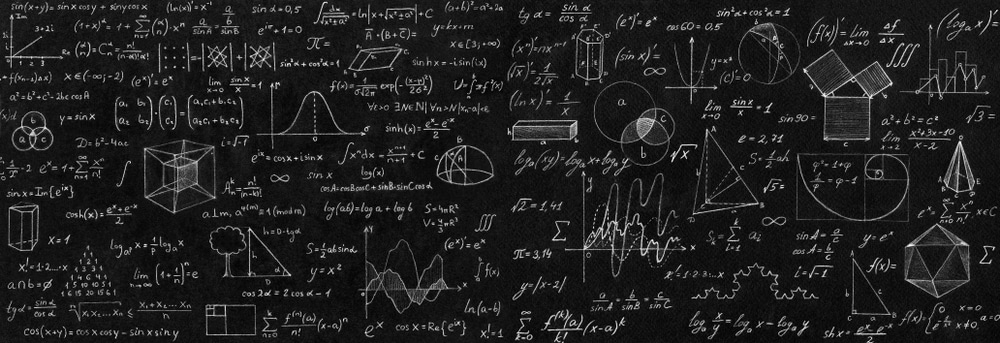International Physics Olympiad
The International Physics Olympiad is a competition for high school students that serves as the World Championship in Physics. It is staged every year in a different nation. The very first IPhO conference was conducted in Poland in 1967.
Over the course of its existence, it has progressively expanded to more than 80 nations across five continents. The IPhO International Board is responsible for ensuring that the tournament is held on an annual basis and that each host nation adheres to the IPhO’s standards as well as the organization’s traditions.
Each national delegation is comprised of at most five student contestants and two leaders, all of whom were chosen at the national level. A national team might also bring observers along with them.
The students compete in the International Physics Olympiad against one another on an individual basis and are required to complete rigorous theoretical and practical tests. The pupils have the opportunity to receive medals of gold, silver, or bronze for their achievements, as well as an honorable mention.
The time allotment for the theoretical test is five hours, and there are three questions to answer. In most cases, there is more than one component to these issues. There are two options for the practical examination in the International Physics Olympiad: either one laboratory examination lasting five hours or two separate examinations that combine to last the entire five hours.
What is the International Physics Olympiad?
What is the International Physics Olympiad? The IPhO is the most prominent international competition for high school students that is held in the field of physics. The primary objective of the IPhO is to assess candidates’ knowledge, critical thinking, problem-solving abilities, appropriate methods of presentation and analysis, as well as their practical expertise in theoretical and experimental physics.
The International Physics Olympiad is a tournament that takes place every year in a variety of nations and lasts for nine to ten days. The competition is open to national teams, each of which can send a maximum of five of their most talented physics students and two team leaders.
Countries that were a part of the Eastern Bloc came up with the concept of establishing an international physics competition after becoming aware of the International Mathematical Olympiad, which had been running since 1959. As a result of what appeared to be the most favorable circumstances at the time, the first IPhO was held in Warsaw, Poland, in 1967. The event was planned by Professor Czesaw Cisowski.
All of the countries located in Central Europe were given an invitation a few months before the tournament, and as a result, there were representatives from the following five nations: Bulgaria, Czechoslovakia, Hungary, Poland, and Romania.
Every nation sent a delegation consisting of three students and one instructor to represent them. Already in this inaugural edition, the competition consisted of two exams, one theoretical and one experimental, and the students went on excursions while their exams were being assessed. These exams were designed to test the students’ theoretical and experimental knowledge.
The second International Physics Olympiad was held in Hungary, with the German Democratic Republic, the Soviet Union, and Yugoslavia also participating in the event. In the years that followed, new editions of the book were published in Czechoslovakia, the Soviet Union, Bulgaria, and Romania, respectively.
In 1972, at the sixth International Phoenicia Olympiad (IPO), France became the first Western country to compete, and Cuba became the first non-European country to do so.
No nation was willing to organize an IPhO in 1973 due to the increasing size and level of organizational effort required (at the time, there was also no participation fee).
Poland volunteered to host another IPhO in 1974 in an effort to keep the competition going, but the issue soon reared its head again: additional Western countries had joined the IPhO at this point, including the Federal Republic of Germany, Sweden, and Finland, and the Eastern Bloc countries decided in 1977 that they would only host every other IPhO. Poland was the country that offered to host the event in 1974.
There was no International Physics Olympiad staged in 1978 or 1980 because Western countries were not yet able to make the requisite long-term preparation effort. The Federal Republic of Germany in 1982 was the first country in the Western Hemisphere to play host to the IPhO.
Since then, the IPhO has been consistently held every year, except in 2020, due to the pandemic, and the organization has evolved into a distinguished initiative that many countries are pleased to participate in.
Over the course of so many years, there has been a constant increase in the number of countries that are taking part. Following the founding group of Eastern Bloc countries, a significant number of European countries have joined the organization since the 1970s, as have countries from Asia and the Americas beginning in the 1980s.
Simply between 1990 and 2000, the overall number rose from 32 to 63 countries, marking a significant growth. Since the 2000s, African countries have started joining the organization.
After a country joins the IPhO, it has five years to inform the other members of the organization about whether or not it is willing to hold IPhO meetings. The location of the Olympic Games is selected many years in advance. Each IPhO is a large event, with over 700 guests and a total expenditure that ranges from several million euros to tens of millions of euros.
Currently, there are over 80 countries that are actively participating in the event. The participation fee, which is approximately 3,500 euros per team and was first implemented on a voluntary basis in 1997 and then made mandatory in 2013, covers a portion of the total cost but only a very tiny portion.
Soon after the conclusion of the second IPhO in 1968, a meeting specifically devoted to the establishment of the IPhO’s formal framework was held in Czechoslovakia. There, the statutes and the curriculum were given the go-ahead for official acceptance by the International Board, which is comprised of the delegation heads from each of the countries that are participating.
In 1971, the number of students on each team was eventually fixed at five, and in 1976, the number of experimental questions in each competition was capped at one or two. Currently, there are three theoretical problems to solve in each competition.
In 1984, the International Physics Olympiad created both a permanent secretariat and an office for the president. Dr. Waldemar Gorzkowski was the person who held this position up until the 2007 Olympiad. After that, it was occupied by Professor Maija Ahtee (2007–2008), Professor Hans Jordens (2008–2018), and finally Professor Rajdeep Singh Rawat (2018 onwards).
Since 1984, the IPhO has worked in conjunction with UNESCO to provide both public awareness and moral support. In the year 1996, an advisory council that featured a total of 14 seasoned individuals was established.
How do you Qualify for the International Physics Olympiad?
How do you qualify for the International Physics Olympiad? In acknowledgment of the expanding significance of physics in all subfields of science and technology, as well as in the general education of young people, the IPhO was created with the intention of enhancing the development of international contacts in the field of school education in physics, an annual physics competition has been organized for students enrolled in secondary schools.
The competition is organized by the Ministry of Education, the Physical Society, or another appropriate institution of one of the participating countries on whose territory the competition is to be conducted. The location of the competition will be determined at a later date.
It is the responsibility of the country that is hosting the competition to guarantee that all of the delegations have an equal chance to compete and to invite teams from all of the countries that have competed in the competition during the previous three years. In addition to that, it possesses the authority to invite other nations.
No nation may have its team disqualified from competition for any political reason, including political tensions, a lack of diplomatic relations, the absence of recognition of some nation by the government of the country that is organizing the competition, embargoes that have been imposed, or other reasons of a similar nature. When there are obstacles that make it impossible to formally invite the team that represents a country, students from that country should be invited to participate as individuals instead.
The competition is held in a cordial environment to foster future partnerships and foster the development of friendships within the scientific community. As a result, any potential political conflicts that may exist between the competitors should not manifest themselves in any action that takes place during the competition. It is completely forbidden to engage in any political activity that is aimed at any particular individual or nation.
Every nation that takes part in the competition is required to send a delegation, which can include a maximum of five accompanying adults (delegation leaders) and five kids who are competing for the title. The participants in the competition must be students currently enrolled in either general or technical secondary schools, that is, schools that are not technically colleges.
Students who have completed their high school examinations in the same year as the tournament are eligible to be members of the team as long as they have not yet begun their studies at a higher education institution. On the 30th of June of the year in which the tournament takes place, the maximum age of the participants must not exceed twenty years old.
The leaders of each delegation need to be physics experts or teachers who teach physics, and they need to be able to solve the challenges presented by the competition effectively. It is necessary for each of them to be able to communicate in English.
The day of arrival and the day of departure, as well as the location within the country from which the delegations are due to arrive and depart, are both chosen by the organizers of the Olympiad in line with the program. The Organizing Committee will pay for all of the costs that each delegation incurs as a result of activities that are connected to the Olympiad, beginning with the day of arrival and continuing through the day of departure.
The contest will take place over the course of two days, with the first day devoted to a theoretical examination and the second day to an experimental examination. At the very least, one complete day of relaxation will be provided in between the tests.
The theoretical examination will last a total of five hours and will consist of three different theoretical issues.
The experimental examination will last a total of five hours, and it will include one or two questions to solve.
Drawing tools and certified calculators are permitted in the examination room for contestants to bring with them. There is a strict prohibition on bringing any other aids inside the examination room.
At least four different subfields of physics that are covered in secondary school should be incorporated into the theoretical issues. The questions presented in the competition should be solvable by students in secondary school using mathematics that is typical of high school and without the need for substantial numerical calculation. The tasks for the competition are selected and prepared by the nation that is playing host to the event, but they still need to be approved by the International Board.
What is the Prize for Winning the Physics Olympiad?
What is the prize for winning the Physics Olympiad? The total number of points that are awarded for the theoretical exam will be 30, and the total number of points that are awarded for the experimental exam will be 20. The organizer of the competition is responsible for deciding how the marks will be distributed throughout the several examinations.
After the preliminary grading has been completed (and before the heads of the delegations have a chance to discuss the grading), the organizers will set the bare minimum requirements (expressed in points) for the following awards: gold medals, silver medals, bronze medals, and honorable mentions, as outlined below:
- Gold Medals should be awarded to 8% of the contestants (rounded up to the nearest integer).
- Gold or Silver Medals should be awarded to 25% of the contestants (rounded up to the nearest integer).
- Gold, Silver, or Bronze Medals should be awarded to 50% of the contestants (rounded up to the nearest integer).
- An Olympic Medal or Honorable Mention should be awarded to 67% of the contestants (rounded up to the nearest integer).
Certificates of participation are given out to all of the other attendees. In addition to receiving a gold medal, the participant who finishes with the greatest score (the absolute champion) is awarded an additional prize.
What is the Benefit of Winning the Olympiad?
What is the benefit of winning the Olympiad? Not only is competing in the International Physics Olympiad a source of tremendous pride, but it also provides an opportunity to gauge one’s capabilities and determine one’s true potential.
Early exposure to learning and competition
Students not only pick up new information but also learn a variety of approaches to the many kinds of papers they may encounter throughout their academic careers. Because of the intensely competitive character of these examinations, participants typically emerge as exceptionally sharp-minded and “smart” problem solvers.
Students get the opportunity to hone their skills by addressing a variety of problems at a degree of difficulty that is significantly higher than what they are likely to experience in the classrooms at their respective schools.
A comprehension of the concepts and their applications
The Olympiads are designed to evaluate not just a student’s conceptual understanding but also their ability to apply that understanding in a timed setting.
For instance, every child will learn about factorization as a concept in mathematics, but the questions that a student will face in Olympiads will be based on “selective applications of factorization.”
When one has a strong capacity for visualization as well as a broad range of comprehension, only then are these applications made evident. In addition, the Olympiads offer the ideal environment in which to hone these abilities.
Honors and achievements received
After doing something meaningful, kids might benefit greatly from having their efforts recognized with awards. The victors of the Olympiad get various prizes, such as medals, cash rewards, certificates of merit, and so on.
Above all else, the feeling of pride that comes with representing one’s state or country at the national or worldwide level is the highest award that a student can receive since it inspires them to achieve even greater success.
Opening doors to esteemed Universities
Students who take part in academic competitions like Olympiads increase their level of knowledge and self-assurance to such an extent that it enables them to compete successfully for spots in the nation’s most prestigious educational institutions.
Students who have advanced to the national or international stages of multiple Olympiads are given preference at the majority of reputable educational institutions.
The Ultimate Advantage
Students who take part in competitions like the International Physics Olympiad or competitive exams benefit from the experience since it teaches them how to both win and lose.
They will likely have a significant number of setbacks before winning their first prize; nevertheless, through these experiences, they will gain valuable insight, such as “It is necessary to put in a lot of work before one can sit in the winner’s chair.”
There is no magic formula for achieving success. It is the outcome of your putting in preparation, effort, and dedication in order to achieve your ambition.
If you need help putting the finishing touches on your college applications, at AdmissionSight, we have over 10 years of experience guiding students through the competitive admissions process.
AdmissionSight can help you put your best foot forward when applying to college. Contact us today for more information on our services.









































